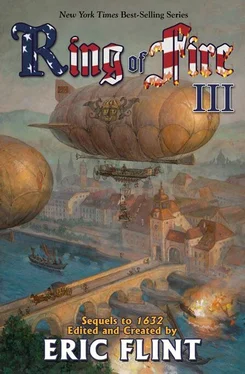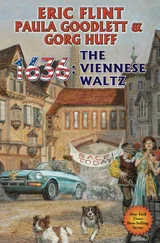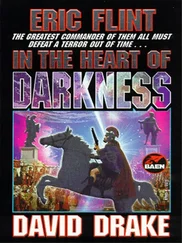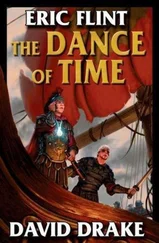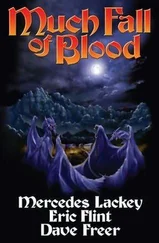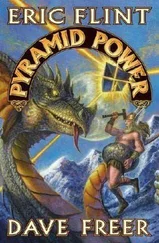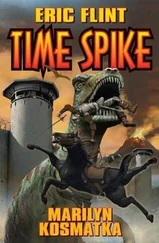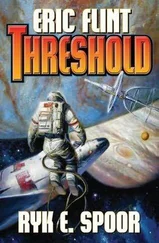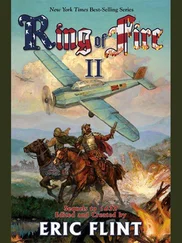Eric Flint - Ring of Fire III
Здесь есть возможность читать онлайн «Eric Flint - Ring of Fire III» весь текст электронной книги совершенно бесплатно (целиком полную версию без сокращений). В некоторых случаях можно слушать аудио, скачать через торрент в формате fb2 и присутствует краткое содержание. Жанр: Альтернативная история, на английском языке. Описание произведения, (предисловие) а так же отзывы посетителей доступны на портале библиотеки ЛибКат.
- Название:Ring of Fire III
- Автор:
- Жанр:
- Год:неизвестен
- ISBN:нет данных
- Рейтинг книги:3 / 5. Голосов: 1
-
Избранное:Добавить в избранное
- Отзывы:
-
Ваша оценка:
- 60
- 1
- 2
- 3
- 4
- 5
Ring of Fire III: краткое содержание, описание и аннотация
Предлагаем к чтению аннотацию, описание, краткое содержание или предисловие (зависит от того, что написал сам автор книги «Ring of Fire III»). Если вы не нашли необходимую информацию о книге — напишите в комментариях, мы постараемся отыскать её.
Ring of Fire III — читать онлайн бесплатно полную книгу (весь текст) целиком
Ниже представлен текст книги, разбитый по страницам. Система сохранения места последней прочитанной страницы, позволяет с удобством читать онлайн бесплатно книгу «Ring of Fire III», без необходимости каждый раз заново искать на чём Вы остановились. Поставьте закладку, и сможете в любой момент перейти на страницу, на которой закончили чтение.
Интервал:
Закладка:
Eric Flint, Mercedes Lackey, Tim Roesch, Gorg Huff,Paula Goodlett, Mark Huston, Bradley H. Sinor, Terry Howard,Walter H. Hunt, Kim Mackey,
Ring of Fire III
Preface
Short fiction has always been an integral part of the 1632 series. The third volume in the series was an anthology of short fiction: Ring of Fire, which came out after 1632 and 1633. More than a decade has gone by since 1632 was published in February of 2000, and seven years since the first Ring of Fire anthology was published in 2004. Over the course of that time, to date, nine novels have appeared in the series and the same number of anthologies.
The anthologies fall into three categories: the Ring of Fire volumes; the paper editions of the Grantville Gazette, whose stories are taken from the electronic magazine by that name; and braided-story anthologies. Only one volume has so far appeared in that last category, 1634: The Ram Rebellion. The second one, 1636: The Wars on the Rhine, is being put together at the moment.
Roughly, the distinction between the three types of anthologies is as follows:
The Gazette volumes represent the traditional type of anthologies connected with popular series. The stories are all set in the 1632 universe, but have no particular relationship to each other and may or may not have much impact on the series as a whole. Some do, but they are not chosen for that reason. They are included simply because Paula Goodlett and I think they’re good stories. (Paula is the editor of the magazine from which the stories are selected.)
The braided-story anthologies like 1634: The Ram Rebellion are collections of short fiction that share a common story arc. The “short” fiction involved always includes at least one short novel.
The Ring of Fire anthologies are more loosely organized. But, with a few exceptions, every story in the anthology is either closely connected to existing story lines in the series or opens up new story lines for later development. And each volume ends with a short novel written by me.
In this third Ring of Fire volume, my short novel (“Four Days on the Danube”) provides the sub-plot hinted at in 1636: The Saxon Uprising and serves as a bridge to the next novel in the series centered on Mike Stearns.
Chuck Gannon’s story “Upward Mobility” comes just before mine because it provides some of the background for my story.
Mercedes Lackey’s story “Dye Another Day” lays some of the basis for a novel she and I will be writing later in the series.
Walter Hunt’s story “Les Ailes du Papillon” is connected to a novel that he and I are working on at the moment. And, as with Chuck Gannon’s other story, “Birds of a Feather,” it starts to bring the New World into the series.
Panteleimon Roberts’ “Mir Arash Khan” and Kim Mackey’s “Salonica” do the same thing for the Ottoman Empire, which will also come to play a prominent role in the series as time goes on.
The Far East has so far been almost completely absent in the 1632 series. Garrett Vance’s “All God’s Children in the Burning East” begins to change that situation. Other stories develop the series in still different ways. Gorg Huff and Paula Goodlett’s “Royal Dutch Airlines” illustrates the ongoing development of air travel-as does Gannon’s “Upward Mobility.” David Carrico’s “Sweet Strings” continues his exploration of the impact of the Ring of Fire on music-and, at least indirectly, helps lay some of the basis for a novel he and I are writing entitled 1636: Symphony for the Devil. Aspects of Jewish history have been an important part of the series since the very beginning. Tim Roesch’s “Falser Messiah” continues in that tradition.
In one way or another, all of the stories in this volume open up or further develop various themes in the 1632 series. And, at least in my opinion, all of them are good stories in their own right.
I hope you enjoy them.
Dye Another Day
Prague was remarkably pleasant for a city that had been the subject of a Defenestration slightly less than twenty years ago. Tom Stone had not retained a lot of facts from his old college classes at Purdue, especially not the History electives he’d taken, but that one-“The Defenestration of Prague,” had stuck with him all these years. He loved that phrase-of course, all that it meant was that three people had been thrown out of a window and had lived because they had landed in a manure pile, but it sounded as if some great catastrophe had taken place. Not so amusing was the fact that the act had been central to the start of the Thirty Years’ War that the up-timers had landed right smack in the middle of.
At any rate, Wallenstein had been a good steward of the place. He’d done a damn fine job of keeping most of the mayhem out of the city.
Morris and Judith Roth, who had moved there to expand their very profitable jewelry business, were hosting Tom and his down-time wife Magda-which meant a certain amount of up-timer comfort amidst the down-timer “ambience.” Upholstered furniture, for instance. Backless wooden benches, hard wooden chairs, these were the norm down-time. There was some upholstered furniture, but it wasn’t what he would have called “padded,” and the older he got, the more he appreciated cushioning. The heavily cushioned chair he was sitting in now was luring him into a discussion he ordinarily would have steered clear of. It was almost political. Tom didn’t like politics at all, and he especially didn’t like down-timer politics.
The subject at hand was the king of Bohemia himself, Wallenstein, who was an ally of the United States of Europe. He was very clearly sick and his nurse, a former hardscrabble Grantville native, was afraid he was dying. The problem was that Wallenstein had some very decided notions about physicians and what they could and could not do with, to, or around him, and that was making diagnosis…difficult. To say the least. Of course, when you lived in a time when you didn’t surrender as much as a hair off your head because someone might use it to curse you with, you could understand his point. A sick king would not want to disrobe in front of a crowd, because someone in that crowd would surely pass on information about his condition to his enemies-but he also would not want to disrobe in front of a physician, alone, because that would be the ideal time for an assassin, perhaps even in the person of that physician, to strike.
And as for up-time medical instruments being used on him-well, how was he to be sure they would do what the up-timers said they would do?
“On the one hand, Wallenstein should have been dead already,” Tom Stone mused to his wife and youngest son. “He should have been assassinated over a year ago. I mean, you could say, like, I dunno, karma? Or maybe the timeline trying to correct itself or…something?” He wished his son hadn’t dragged him into this. All he’d wanted to do was to get back to Grantville for a while and forget about parading around Italy as if he was some sort of genius, like Galileo, when he wasn’t. He was just an up-time dope farmer with most of a pharmacy degree and a knack for the sort of herbal-slash-pioneering style of medicine that the hippies of his commune had used instead of the real doctors none of them could afford.
Gerry Stone sighed. “You read too many science fiction books,” he replied.
Tom raised a bushy eyebrow. “We’re living in a science fiction book,” he pointed out. “Just in case you hadn’t noticed.” He pondered the situation with Wallenstein a little more. “On the other hand, I haven’t seen a lot of evidence of other people dropping dead that should have been dead already, so it’s probably not that. What’s Edith say?”
Читать дальшеИнтервал:
Закладка:
Похожие книги на «Ring of Fire III»
Представляем Вашему вниманию похожие книги на «Ring of Fire III» списком для выбора. Мы отобрали схожую по названию и смыслу литературу в надежде предоставить читателям больше вариантов отыскать новые, интересные, ещё непрочитанные произведения.
Обсуждение, отзывы о книге «Ring of Fire III» и просто собственные мнения читателей. Оставьте ваши комментарии, напишите, что Вы думаете о произведении, его смысле или главных героях. Укажите что конкретно понравилось, а что нет, и почему Вы так считаете.
